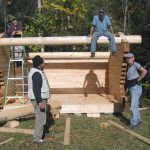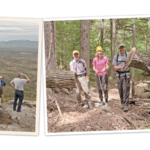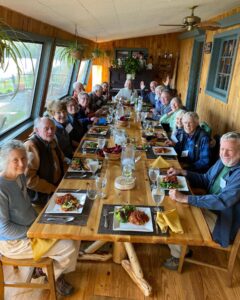
A hardy group of enthusiastic friends of the International Appalachian Trail came together Friday, May 6th at Mt. Chase Lodge on Upper Shin Pond for the 28th annual meeting. This was the first face-to-face meeting since 2019, so participants were careful to check their COVID status before departing home and followed safe protocols throughout the weekend.
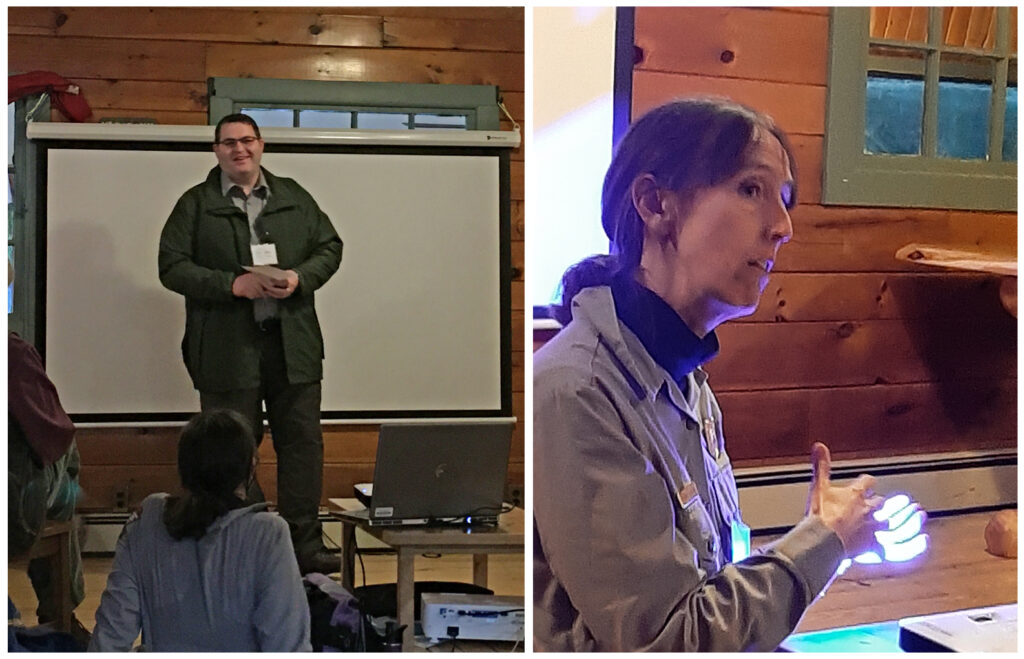
The annual meeting program began after dinner Friday evening. Mt. Chase Lodge is a short distance from the IAT and a lot has transpired along the trail between Katahdin Lake and the Lodge in the years since we first met at Shin Pond in 2005. The new Superintendent of the Katahdin Woods and Waters National Monument Mark Wimmer gave us a snapshot of the work now underway to improve public access to the monument and the overall visitor experience. Isabel Ashton followed up with an outline of her work as the Integrated Resources Program Director to document natural and cultural resources in the monument and begin to initiate monitoring of as much as possible. Notably, Isabel and her team had success with monitoring bats during the past year. Maine IAT board members Chunzeng Wang and Bob Marvinney helped with an initial survey of paleontological resources––fossils!––in the monument. Mark and Isabel had a tough time getting out the door at the end of the evening for all the questions.
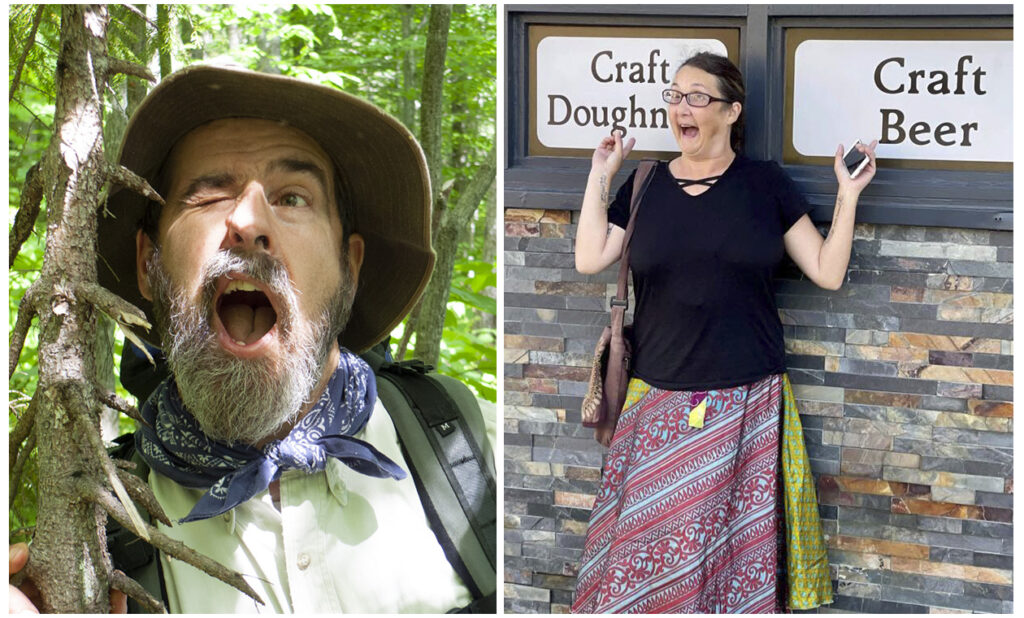
Saturday morning began with the formal Annual Meeting of the members and directors. IAT Coordinator Bill Duffy summarized the past year’s activities. This meeting was Bill’s swan song as Coordinator, and he shared a warm personal connection with the father of our new Coordinator, Amy Barker, the late marine biologist Seth Barker. Bill worked with Seth in the Maine state government years ago. Amy greeted the members and told us how her father had instilled in her a love of the outdoors, and especially hiking. When Seth died earlier this year, Amy and her family asked that gifts be made in lieu of flowers to the IAT.
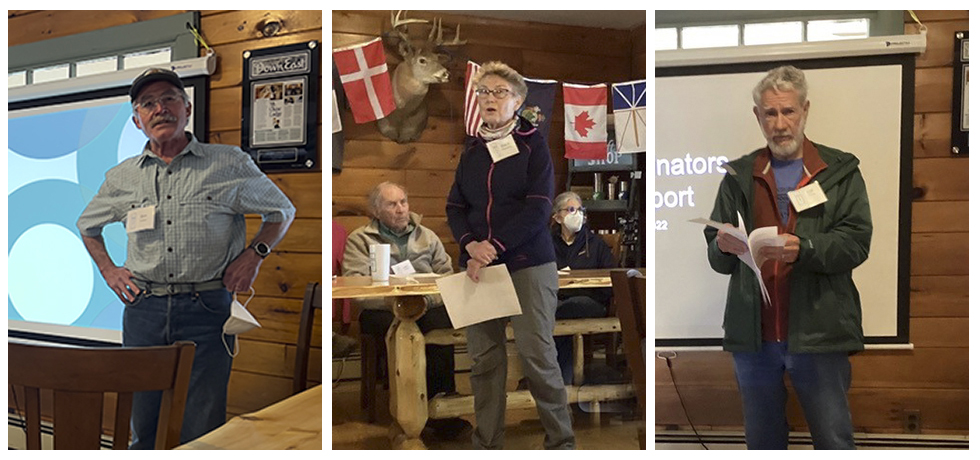
Elaine Hendrickson followed with the presentation of IAT hikes planned for the coming months. The full schedule will be posted in early June and will include a hike of the Mars Hill ridge, a hike to the Deasey Fire Cab, and a possible 2-night/3-day hike of the IAT in the monument. The schedule will include at least one hike each month from June through October.
Following a summary of international activity along the trail by Don Hudson, the formal business of the Annual Meeting concluded with the election of the directors and officers.
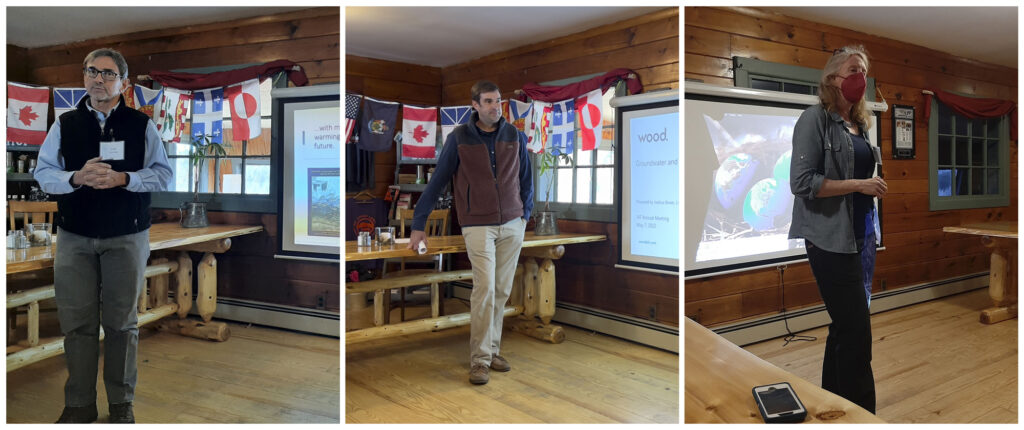
We spent the second half of the morning thinking about climate change, as it relates especially to Maine’s forests and groundwater. Distinguished Professor Ivan Fernandez of the University of Maine’s Climate Change Institute and School of Forest Resources summarized the state’s climate action plan––Maine Won’t Wait––released by the Climate Council in December 2020. Ivan then turned to the significant role that Maine’s vast acreage of intact forest can play in helping us to become carbon neutral by the year 2045. Forests of any age store carbon, and those that are managed sustainably have the greatest potential to pull gaseous carbon from the atmosphere and convert it to the building blocks of plants––carbohydrates like cellulose. Even old growth forests continue to store more carbon as they mature, though the rate slows. The old saw that old forests have stopped growing turns out not to be true. Ivan explained that Maine’s vast forestlands are the envy of most other states thinking about their own goals for reaching net zero carbon. He cautioned, however, that our significant carbon storage advantage could wither if not managed carefully.
Maine IAT board member Josh Bowe has spent the past 20 years keeping very close tabs on the status of groundwater in Maine, and he has arrived at a very similar conclusion. Maine is blessed with abundant groundwater, and we are on track to receive significantly more precipitation as the climate warms. Josh showed us the evidence of how precipitation has increased from 40″/year 30 years ago to 45″/year today. Increased precipitation has contributed to increased storage of water in the ground, yet the distribution of increased groundwater is not seen uniformly across the state. In a recent consultation with stakeholders on Vinal Haven, Josh recommended that the town plan carefully for development. Though there may be 10% or 20% more water available, a greater increase in population could put everyone’s water supply at risk.
Ivan and Josh agree that Maine is in a good position to meet the challenges of climate change, but not without careful attention to the management of our rich natural resources combined with a concerted effort to reduce carbon emissions from all sources––from our cars, our homes, and our businesses.
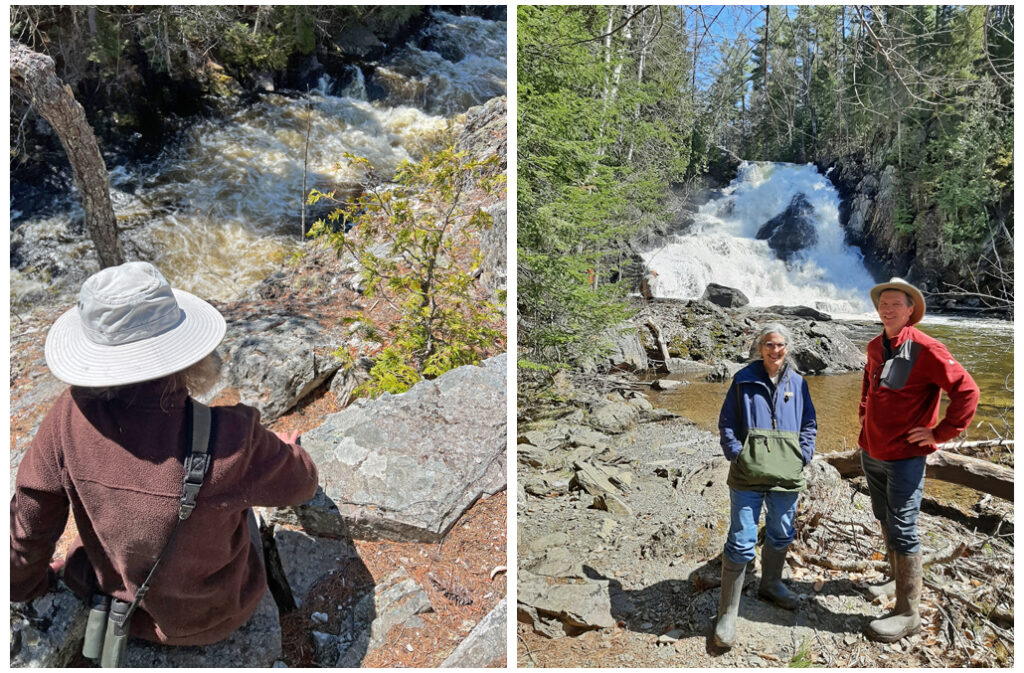
After an afternoon hiking break to explore the Seboeis Riverside Trail and a trip to Shin Falls the Annual Meeting concluded with a special dinner and an evening presentation by University of Maine at Farmington Professor and Maine IAT Board Member Julia Daly, who spoke about her work with colleagues and students to understand how the climate is impacting Maine’s and the region’s high mountain ponds. Julia and her team have been able to document subtle but increasing changes to the time of ice out and the impact that this timing is having on the life in the ponds. However, for her, this project has been most satisfying as a means for introducing students to the work and life of a scientist. With her guidance, they have shared in the mundane, sometimes difficult, aspects of hauling inflatable boats and heavy sampling equipment up mountains, as well as the joys of seeing the results begin to illuminate the story of what’s happening to mountain ponds in the face of a changing climate.
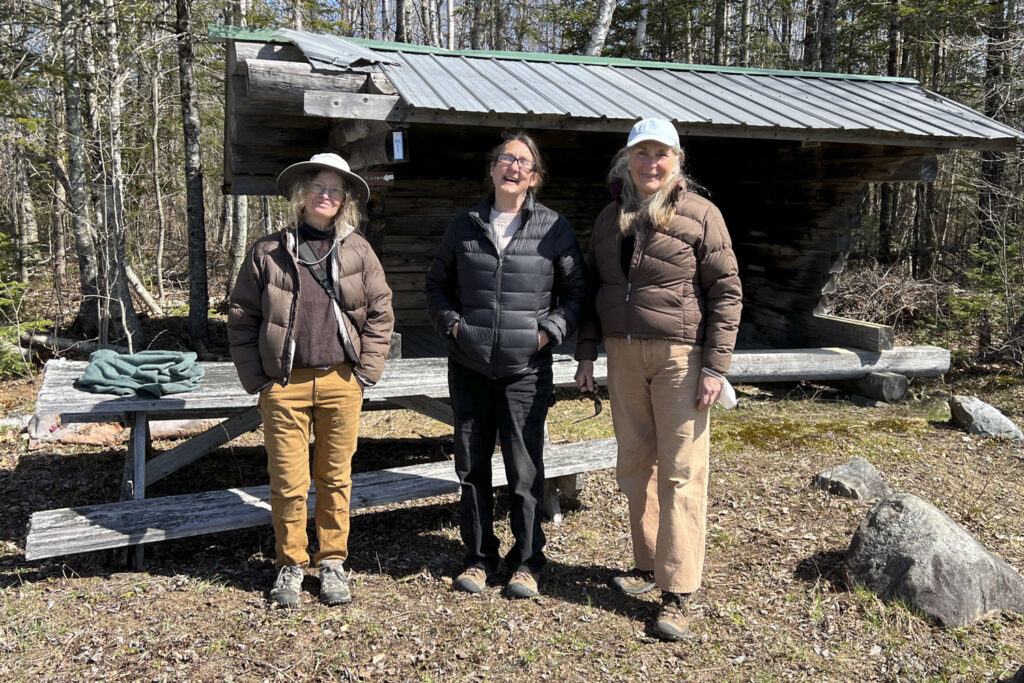
A very successful and satisfying gathering concluded Sunday morning with a look at the trails that Lindsay and Mike Downing are developing onsite at Mt. Chase Lodge. Who knows?! Perhaps one day the IAT might connect directly with the Lodge on just such a trail.

